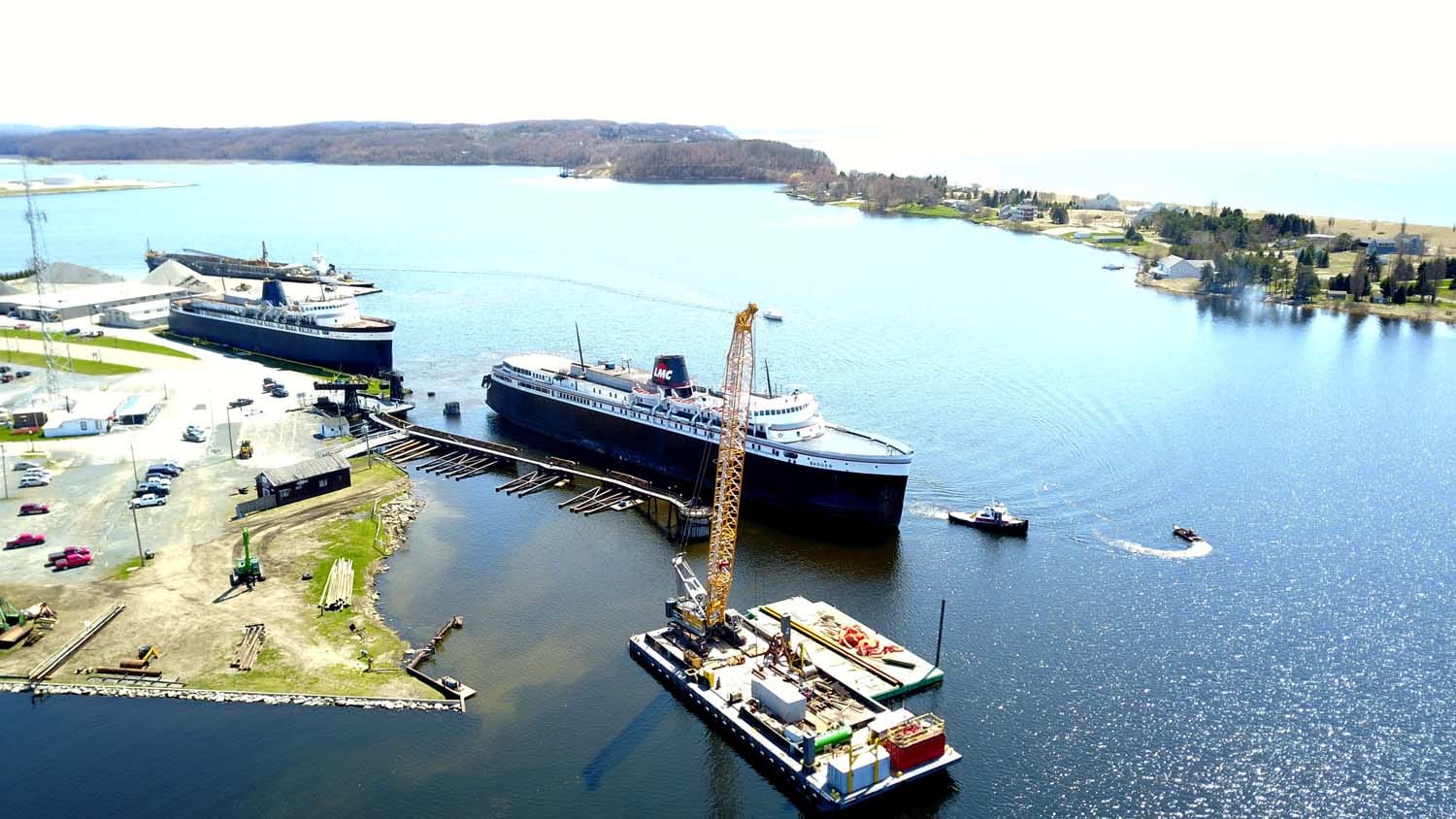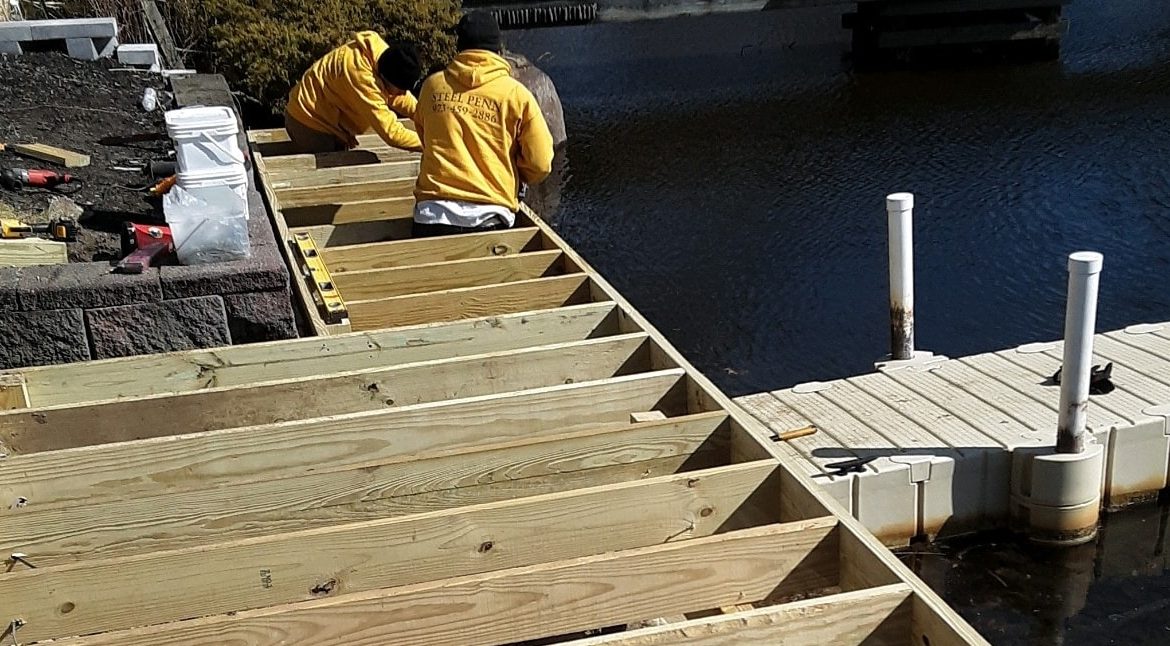How to Pick the Right Solution for Your Dock Repairs
How to Pick the Right Solution for Your Dock Repairs
Blog Article
Just How to Address Common Dock Fixing Issues for Safe Water Tasks

Identifying Common Dock Issues
Recognizing common dock problems is crucial for maintaining the functionality and safety and security of your waterfront residential or commercial property. Normal inspections can assist reveal troubles before they become severe, making certain both the longevity of the dock and the security of those that utilize it. One prevalent issue is loosened or corroded bolts. Gradually, screws, screws, and other fasteners can come to be loosened due to consistent exposure to water and climate elements, resulting in architectural instability.
An additional usual problem is the destruction of flotation gadgets. These devices are essential for keeping the dock buoyant, and any damages or leaks can trigger the dock to listing or sink. Frequently checking for leakages or waterlogged drifts can preempt extra significant problems.
In addition, algae and barnacle accumulation on the dock's surface area can develop unsafe and unsafe conditions. This biofouling not just positions a danger to customers but can additionally accelerate the damage of the dock materials.
Finally, checking for signs of corrosion on metal parts is important. Corrosion can jeopardize the stability of the dock's framework, making it dangerous. By routinely recognizing these usual dock issues, you can ensure that your dock stays useful and safe for several years to come.
Fixing Rotting Timber
When dealing with the problem of deteriorating timber on your dock, it is important to act promptly to prevent further damage. Begin by thoroughly inspecting the whole framework to recognize all affected areas. Utilize a screwdriver to penetrate the timber; if it sinks in quickly, the timber is most likely rotted and requires immediate attention.
When determined, eliminate the decayed areas utilizing a saw or chisel. Make sure to reduce to healthy, solid wood, ensuring you get rid of all jeopardized product. After removal, deal with the remaining wood with a wood preservative to protect against future rot. This therapy will certainly aid secure versus moisture, which is the main cause of timber decay.
Next, replace the removed areas with marine-grade lumber or pressure-treated wood, which are a lot more immune to water damage. Safeguard the brand-new items with galvanized or stainless-steel bolts to protect against rust. Furthermore, applying a waterproof sealant to the brand-new wood can supply an added layer of defense.
Protecting Loosened Boards
Exactly how do you guarantee your dock stays practical and safe for all its users? One important aspect is protecting loose boards, which can or else pose considerable risks. Loose boards not just boost the threat of tripping however can likewise endanger the structural honesty of the whole dock.

For reinstallation, make use of stainless or galvanized steel screws, as these materials offer exceptional resistance to corrosion in aquatic settings. Make sure the screws are long sufficient to permeate deep right into the underlying assistance framework, however not as long that they protrude via the dock's surface area. Pre-drilling pilot holes can aid stop the timber from splitting.
Lastly, maintain a routine inspection routine to identify and deal with any brand-new problems without delay. By protecting loosened boards properly, you add to the total safety and security click for info and longevity of your dock, making it a trustworthy system for water activities.
Supporting Unstable Pilings
Guaranteeing the security of unstable pilings is extremely important to maintaining a risk-free and functional dock. Unsteady pilings can compromise the whole structure, posing considerable threats to customers and potentially causing costly fixings. The primary step in maintaining these necessary components is a detailed assessment. Analyze the pilings for signs of rot, damage, or moving. Use a degree to look for vertical placement and ensure they are driven deep sufficient right into the substrate to provide ample support.
If the pilings are found to be unpredictable, one effective approach for reinforcement is using additional supporting. Cross-bracing with dealt with lumber or galvanized steel can significantly boost stability. Support the dental braces securely to both the pilings and the dock structure to distribute lots evenly.

Regular upkeep and periodic review of the pilings' security are critical to ensuring long-term dock safety and capability.
Changing Rusty Hardware
Addressing unsteady pilings is simply one facet of preserving a dock's honesty; one more critical issue is changing rusty equipment. Gradually, direct exposure to wetness and salt can lead to the oxidation and deterioration of braces, screws, and screws, jeopardizing the whole structure's security. Routine evaluation for corrosion is vital, specifically after severe weather or seasonal modifications.
When rusty hardware is identified, instant activity is required. Begin by choosing marine-grade stainless steel or galvanized hardware, both developed to resist the harsh aquatic atmosphere. Make sure that you have the appropriate devices, such as wrenches and screwdrivers, to safely eliminate the old, rusty pieces without causing more damages to the dock.
After getting rid of the rustic equipment, extensively clean the influenced locations to get rid of any recurring corrosion or particles. Use a rust-inhibiting primer to exposed metal surfaces before installing the brand-new equipment. Tighten all components securely to stop future loosening, and regularly check the fittings to guarantee continuous security.
Replacing rusty hardware not only extends the dock's life-span yet additionally considerably More about the author improves the safety of water activities. By proactively handling rust, you safeguard both the structure and its individuals, making certain a pleasurable and secure waterside experience.
Final Thought
Regular inspections and maintenance are vital to resolve typical dock repair service issues and guarantee secure water tasks. By determining and fixing issues such as rotting wood, loose boards, unsteady pilings, and corroded hardware, structural stability and long life can be substantially boosted. The application of suitable treatments and marine-grade products better strengthens the dock against ecological stressors. why not check here Such positive procedures add to the overall safety and performance of dock structures, cultivating a safe and secure environment for water-based tasks.
Making sure the safety of water activities hinges substantially on the proper maintenance and fixing of docks (Dock Repairs). These devices are important for keeping the dock resilient, and any damages or leaks can trigger the dock to list or sink. By consistently identifying these typical dock problems, you can make sure that your dock remains practical and protected for years to come
Making certain the security of unsteady pilings is extremely important to maintaining a secure and useful dock.Routine assessments and maintenance are necessary to address usual dock repair work problems and guarantee safe water tasks.
Report this page